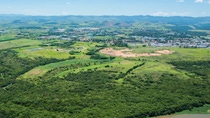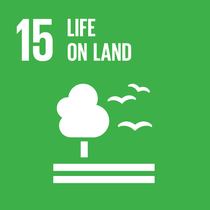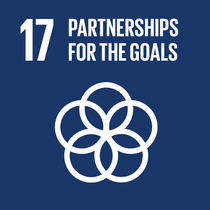750
hectares of forest restored
Agriculture
Brazil

Mata Viva
The Mata Viva® initiative in Brazil was founded in 1984, to protect water quality, conserve soil, and create areas to preserve native vegetation and wildlife. Its first major achievement was to restore 128 hectares of forest along the Paraiba do Sul River, near the company’s largest South American chemical complex at Guaratinguetá. A collaboration of BASF and Fundacao Espaco Eco, Mata Viva® has flourished across Brazil, attracting a broad range of partners from the agricultural, business and scientific communities, all united in their desire to foster biodiversity. The new Carbon Emissions Offset Program will provide resources to support forest restoration in the green reserve ‘Mata do Barreiro Rico’. Located in the city of Anhembi, this is one of the last refuges of the ‘Muriqui-do-sul’ monkey (Brachyteles arachnoides), a species classified by IUCN as critically endangered.
Why
The region surrounding BASF’s site in Guaratinguetá, located along the Paraíba do Sul river, is part of the Atlantic Rainforest and inspired our efforts to preserve the local environment by promoting sustainable practices in Brazilian agriculture. By reclaiming degraded land, we can restore biodiversity and store carbon in the soil. As a further result of our work to foster sustainable agriculture, local farmers can market their agricultural products better abroad. As farmers' sales increase, poverty among the rural population decreases and new jobs are created in the areas of environmental sustainability and responsible agriculture.
How
Attracting a broad range of partners from agricultural, business and scientific communities, all united in their desire to foster biodiversity, Mata Viva® combines biodiversity research and farming practice to balance a productive agriculture and a flourishing biodiversity. Today, the Mata Viva® program in Brazil continues to reach thousands of farmers, students, agricultural businesses, universities, research centers, and private companies in an effort to recultivate the land, improve farming methods and show how sustainable agriculture contributes to business success.
Since 2013, the Mata Viva Program has been leveraging the planting of tree seedlings as a strategy for carbon offsetting. In 2020 and 2021, all revenue obtained through this effort was used to restore the Barreiro Rico green reserve.
Result


1,300,000
seedlings planted

230,000
students have benefitted

98
studies on eco-efficiency, for example carbon footprint, conducted

2,800
teachers trained

153
Brazilian municipalities participated
SDGs

Encouraging long-term behavioral change, Mata Viva’s educational module trains future farmers in balancing environmental protection and productive agriculture, classroom formats teach children to value nature and the environment.

By restoring degraded land and planting trees, soil health is promoted and carbon sequestered.

Mata Viva creates protected areas for preserving native vegetation and wildlife, contributes to species enrichment and forest diversity.

We partner with farmers, universities, NGOs and the private sector to join forces in fostering research, promoting sustainable farming and protecting biodiversity.
